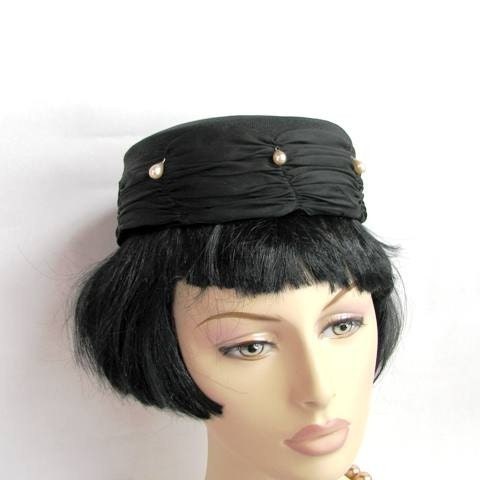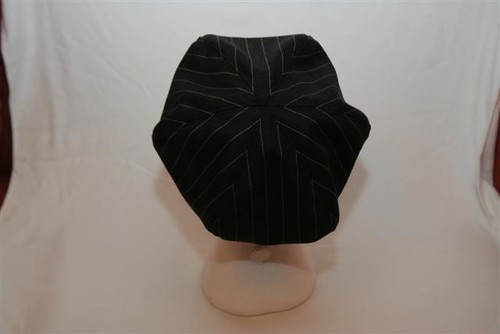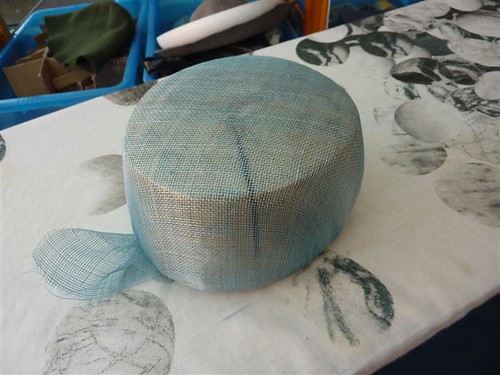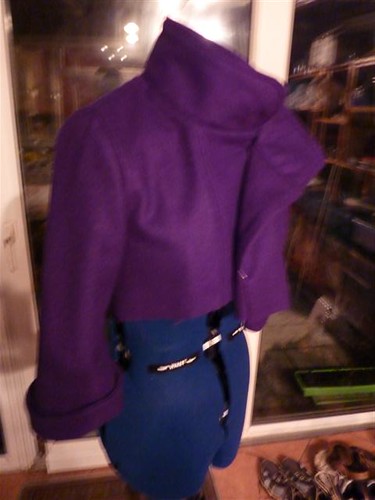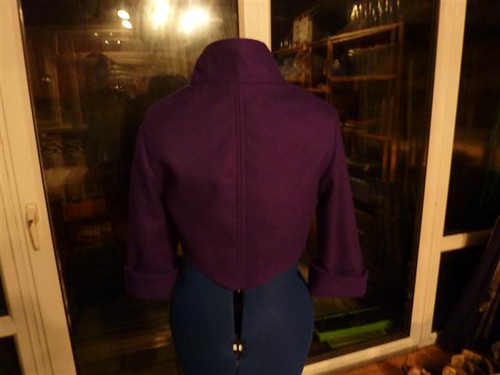First off, I must admit that as the teacher was busy doing tutorials I went for the “bodger” approach and don’t know if what I did was right. We’ll have to see next week if it’s worked.
 First I steamed my hood (beautiful dark red wool felt this week) and blocked the crown. I used an elastic and pinned the excess to the underside to get it out the way but to keep it stretched. I picked a brim block that fitted around the crown and propped it all in place. I steamed the brim heavily and then stretched it over the brim, pinning the front, back and sides. Using more steam I stretched the felt all around the brim to make sure it was well stretched and straight. The whole thing was excessively fiddly, but not as time-consuming as I’d expected. The brim had a string groove in so I put a figure of eight knot in a piece of elasticated cord (the only thing I could find that wouldn’t snap) to make a sturdy slip-knot and pulled it tight around the groove. I steamed and pulled until I could see that the cord was making a good indentation.
First I steamed my hood (beautiful dark red wool felt this week) and blocked the crown. I used an elastic and pinned the excess to the underside to get it out the way but to keep it stretched. I picked a brim block that fitted around the crown and propped it all in place. I steamed the brim heavily and then stretched it over the brim, pinning the front, back and sides. Using more steam I stretched the felt all around the brim to make sure it was well stretched and straight. The whole thing was excessively fiddly, but not as time-consuming as I’d expected. The brim had a string groove in so I put a figure of eight knot in a piece of elasticated cord (the only thing I could find that wouldn’t snap) to make a sturdy slip-knot and pulled it tight around the groove. I steamed and pulled until I could see that the cord was making a good indentation. I also steamed the creases out of the hat I manipulated last week. When I took it off the block though, it is far far too tall! I think I’ll measure how tall I want the crown and cut it to make it a two-piece to bring the height down. I trimmed the brim (I’m really pleased with the manipulation I did on that last week) and decided that I’ll try a rolled edge on that when I wire it.
I also steamed the creases out of the hat I manipulated last week. When I took it off the block though, it is far far too tall! I think I’ll measure how tall I want the crown and cut it to make it a two-piece to bring the height down. I trimmed the brim (I’m really pleased with the manipulation I did on that last week) and decided that I’ll try a rolled edge on that when I wire it.I was exhausted from a lack of sleep over the weekend so I decided I’d achieved enough and headed home early. I’ll try to get some more work in over the weekend ready for next week. I was disappointed to find out that the last class in December has been moved to early January – when I’ll be away. That means I’ll miss two classes instead of one :o(
